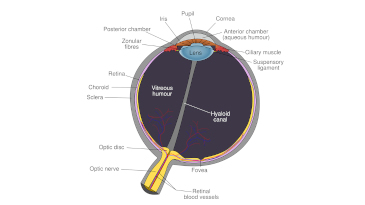- Series:Creation, God’s Design, Humans, Transcript English
Isaiah 29:16
“Surely your turning of things upside down shall be esteemed as the potter’s clay: for shall the work say of him that made it, He made me not? or shall the thing framed say of him that framed it, He had no understanding?”
 It was first discovered in 1855, but many scientists debated its existence for another 50 years. Once its existence was finally proven to everyone’s satisfaction, it was another 50 years before science had any tools to begin studying it. Finally, in the late 1980s, scientists began to learn a little about the secrets of one of the tiniest, yet most amazing structures in the body.
It was first discovered in 1855, but many scientists debated its existence for another 50 years. Once its existence was finally proven to everyone’s satisfaction, it was another 50 years before science had any tools to begin studying it. Finally, in the late 1980s, scientists began to learn a little about the secrets of one of the tiniest, yet most amazing structures in the body.
At the back of the eye, between the deepest layer of the retina and the cells beneath it, lies a tiny moat made up of about 10 drops of a mysterious fluid. The entire moat is thinner than a sheet of cellophane.
It seems that the clear fluid in the moat serves the surrounding light-sensing tissues of the eye in place of blood, bringing in nutrients and carrying away waste. It also transports light-sensitive chemicals needed by the light-detecting cells in the eye. In addition, it seems to glue the retina in place. More than that, the moat is rich in a growth factor. This fact makes scientists believe that the gel may also be important to repairing injuries to the retina, keeping the cells of the retina young and active, as well as helping in the growth of new cells. As one researcher said, the more they study this tiny structure, the more unexpected abilities they find – something like a bottomless suitcase.
Charles Darwin, who didn’t even know about the moat, was right when he said that it was impossible to believe that natural selection could have produced the eye.
Prayer: Father, I thank You that I have been made through Your personal attention and love and that my creation was not the responsibility of chance and accidents. I trust Your continuing love in my life through Jesus Christ. Amen.
Author: Paul A. Bartz
Ref: Weiss, P.L. 1990. “Eye diving.” Science News, v. 138, Sept. 15. p. 170. Image: Parts of the eye – Pixabay.com
© 2021 Creation Moments. All rights reserved.
